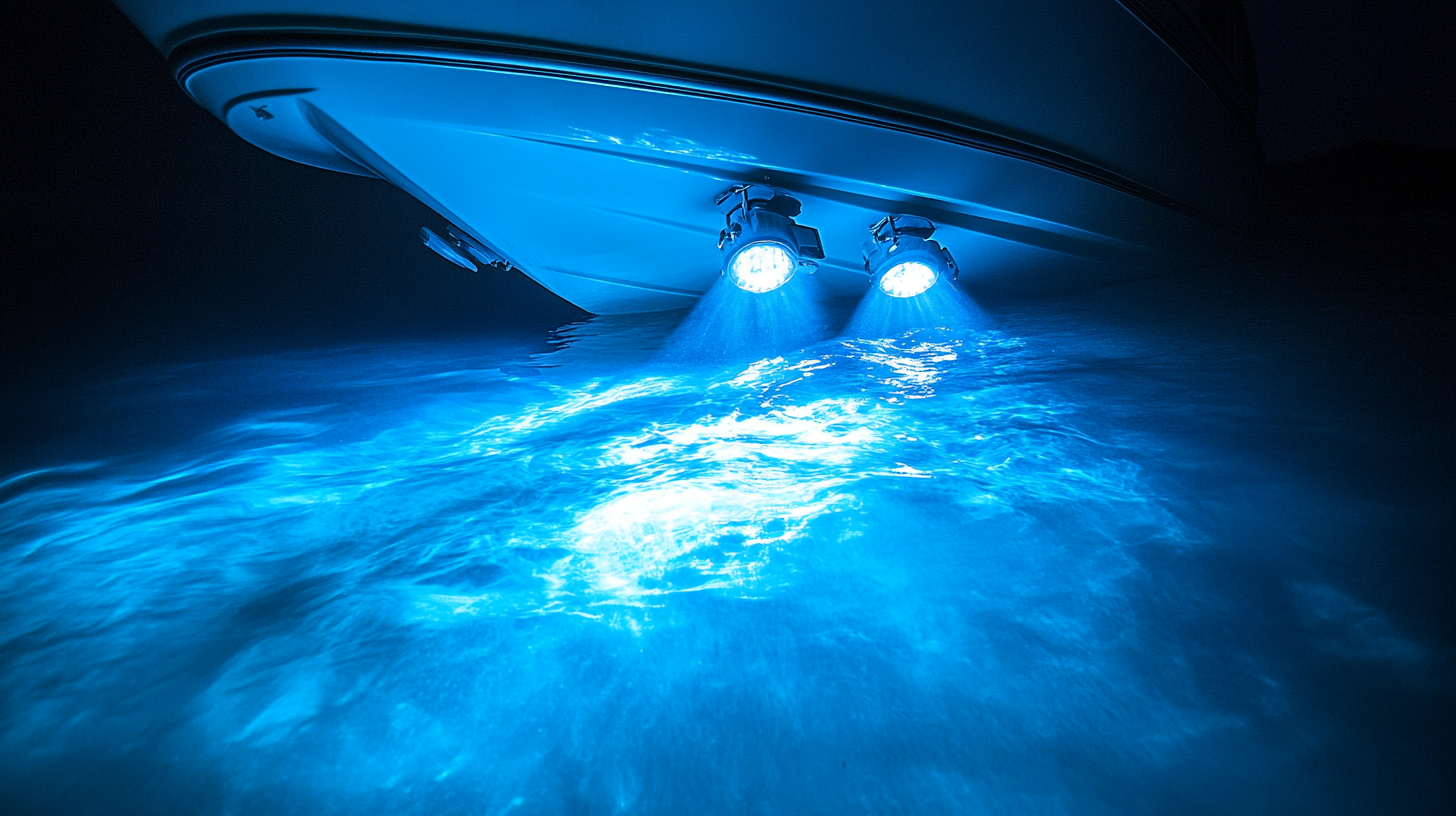The evolution of underwater pool lighting technology
The history of underwater pool lighting traces back to the early 20th century when electric bulbs were first encased in protective, watertight housings to illuminate swimming pools. This was a monumental leap in the evolution of pool lighting technology, transforming night swimming from a potentially hazardous activity into a magical experience. These initial lights were often large, cumbersome units that required significant maintenance and frequent bulb changes. Despite their limitations, they marked the beginning of a journey toward more sophisticated systems.
In the early days, the main challenge was to create a fixture that could withstand the harsh conditions of being submerged in water. The early systems used robust materials and thick glass to protect the electric components from water intrusion. These innovations were groundbreaking at the time, allowing pools to be used safely after dark for the first time. Enthusiastic swimmers and hosts of glamorous pool parties alike could now enjoy the benefits of underwater lighting, creating a vibrant and inviting ambiance.
As the demand for safer, more efficient underwater pool lighting grew, so did the efforts to refine and enhance the technology. Engineers and designers worked tirelessly to make the lights smaller, more reliable, and easier to maintain. These endeavors eventually paved the way for the introduction of other lighting technologies, each step building on the achievements of the past. What started as simple, watertight lights has now evolved into a complex facet of pool design, enhancing both the functionality and aesthetics of swimming pools worldwide.
The introduction of fiber optics
The introduction of fiber optics marked a significant evolution in underwater pool lighting technology. Unlike traditional lighting systems that consisted of bulky, heat-emitting fixtures, fiber optic technology offered a sleek and efficient solution that was safer and more versatile. Essentially, fiber optic lighting involves a centralized light source—a powerful illuminator—located safely outside the pool. Light travels through a bundle of optical fibers and is emitted through lens fittings inside the pool, creating an enchanting underwater glow.
This technology revolutionized the way pools were lit, offering numerous advantages over previous systems. First and foremost, having the light source outside the pool meant that there was no electrical equipment submerged in water, drastically reducing the risk of electric shock and making maintenance easier and safer. Additionally, fiber optic lighting generated less heat, making the pool environment more comfortable for swimmers and eliminating the risk of burns.
Furthermore, fiber optic lighting was incredibly flexible and adaptable. Designers could create stunning visual effects by varying light patterns, colors, and intensities. This newfound ability to customize underwater lighting brought a new level of creativity and aesthetic appeal to swimming pool design. Homeowners and commercial property managers could craft unique, immersive environments that were both functional and visually captivating.
Apart from aesthetics, fiber optics also contributed to energy efficiency. The centralized light source could often use less power than multiple individual fixtures, reducing energy consumption while still providing ample illumination. This efficiency aligned well with the growing environmental consciousness of the late 20th and early 21st centuries, making fiber optic lighting an attractive option for eco-friendly pool designs.
As fiber optic technology continued to evolve, it became more accessible and affordable, allowing more pool owners to enjoy its benefits. The robustness and adaptability of fiber optics set the stage for future advancements in underwater pool lighting, serving as a crucial bridge between the early, rudimentary systems and the sophisticated LED technologies we see today.
Advancements in LED technology
With the introduction of LED technology, underwater pool lighting underwent a remarkable transformation. LEDs, or Light Emitting Diodes, offered unparalleled advantages over previous lighting technologies, including fiber optics. LEDs are tiny, powerful light sources that produce brilliant illumination while consuming minimal power. This combination of efficiency and brightness has made LEDs the gold standard in modern underwater pool lighting technology.
One of the standout benefits of LEDs is their energy efficiency. Unlike traditional incandescent bulbs and even fiber optic systems, LEDs convert a higher percentage of energy into light rather than heat. This efficiency not only reduces electricity bills but also minimizes the environmental impact, making LED lighting a more sustainable choice. The longevity of LEDs is another significant advantage. Whereas traditional bulbs might last for around 1,000 hours, LEDs can illuminate pools for up to 50,000 hours or more, drastically cutting down on maintenance and replacement costs.
The evolution of LED technology did not stop at just efficiency and longevity; it also brought about a revolution in lighting design. LEDs are available in a wide range of colors and can be combined in various ways to create dynamic lighting effects. Whether a pool owner desires a tranquil blue hue, a vibrant rainbow display, or a sophisticated light show that synchronizes with music, LEDs offer the flexibility to achieve these effects effortlessly. The ability to control the lighting through applications on smartphones or integrated smart home systems only adds to the convenience and allure of LED underwater pool lighting.
In addition to aesthetic benefits, LEDs enhance safety. Since they produce less heat, they lessen the risk of burns or overheating, making the pool environment more comfortable and safe for swimmers. The small size of LEDs also means they can be seamlessly integrated into the design of the pool, from the walls to the steps, providing uniform lighting and eliminating dark spots for better visibility underwater.
The advancements in LED technology have made it easier for pool owners to tailor their lighting to specific needs and preferences. Whether it’s accentuating architectural features, setting the mood for a nighttime swim, or creating themed lighting for special events, LEDs make it all possible. Furthermore, the decreasing cost of LED technology has made these benefits more accessible to a broader range of pool owners, democratizing this advanced lighting option.
LED technology continues to evolve, promising even more exciting developments on the horizon. Innovations in smart technology integration, color rendering, and energy efficiency are constantly being refined, ensuring that LED underwater pool lighting remains at the cutting edge of both technology and design. As we look to the future, it’s clear that LEDs will play a pivotal role in the ongoing evolution of underwater pool lighting.
Energy efficiency and environmental impact
In recent years, the emphasis on energy efficiency and minimizing environmental impact has become a central focus in the evolution of underwater pool lighting technology. As concerns about climate change and the depletion of natural resources accelerate, both manufacturers and consumers are increasingly seeking lighting solutions that not only enhance the aesthetic appeal of pools but also align with sustainable practices.
One of the most significant advantages of modern underwater pool lighting technologies, particularly LEDs, is their exceptional energy efficiency. LEDs consume a fraction of the power required by traditional incandescent bulbs. To put this into perspective, an incandescent bulb may use about 60 watts, whereas an equivalent LED fixture might use only 7-10 watts to produce the same amount of light. This dramatic reduction in energy consumption translates to substantial savings on electricity bills, making LEDs a cost-effective choice in the long run.
| Lighting Type | Wattage | Average Lifespan |
|---|---|---|
| Incandescent | 60W | 1,000 hours |
| Fiber Optic | 25W (centralized) | 10,000 hours |
| LED | 7-10W | 50,000 hours |
In addition to energy savings, LEDs have an impressively long lifespan. Whereas traditional incandescent bulbs might last around 1,000 hours, and fiber optic systems about 10,000 hours, LEDs can last up to 50,000 hours or more. This not only reduces the frequency of replacements but also minimizes the environmental impact associated with manufacturing, transporting, and disposing of bulbs.
Another environmental benefit of modern underwater pool lighting is the reduction in harmful substances. Traditional lighting systems often contained materials like mercury, which posed significant environmental hazards. LEDs, on the other hand, are free from such toxic elements, making them a safer, greener choice. Additionally, advancements in LED technology have facilitated the development of more eco-friendly manufacturing processes, further lessening the environmental footprint.
Beyond just energy efficiency and durability, underwater pool lighting technology has also evolved to support smart lighting solutions that contribute to overall energy management. Modern LED systems often come equipped with sensors and connectivity features that enable automated control of lighting based on occupancy, ambient light levels, and specific usage patterns. By optimizing the operation of pool lights, these smart systems ensure that lights are used only when necessary, further conserving energy.
Solar-powered underwater pool lights represent another frontier in sustainable lighting solutions. These lights harness solar energy during the day and store it in integrated batteries, which then power the LEDs at night. While perhaps not as powerful as electrically wired systems, solar-powered lights offer an eco-friendly alternative for small pools, hot tubs, and decorative water features.
Finally, as environmental regulations become more stringent, manufacturers are continuously innovating to meet and exceed these requirements. The shift towards using recyclable materials, reducing packaging waste, and implementing energy-efficient manufacturing processes reflects the industry’s commitment to sustainability.
In conclusion, the future of underwater pool lighting lies in creating solutions that are as kind to the planet as they are beautiful and functional. By focusing on energy efficiency and reducing environmental impact, the industry is making significant strides towards a more sustainable future while continuing to enhance the swimming experience through innovative lighting technology.
The future of underwater pool lighting
Looking ahead, the evolution of underwater pool lighting technology promises innovations that will further transform the swimming experience. One of the most anticipated advancements is the incorporation of smart technology. Future systems are expected to integrate seamlessly with smart home ecosystems, allowing homeowners to control and customize their pool lighting through voice commands or mobile apps. Imagine diving into a pool where the lighting adjusts based on preset preferences, time of day, or even synchronized music and light shows for parties.
Emerging materials and manufacturing processes are also set to play a significant role. Advances in nanotechnology could lead to the development of ultra-thin, flexible lighting panels that can be embedded directly into pool surfaces. These panels could offer uniform, vibrant illumination and be easily updated or replaced, enhancing both the aesthetic and functional aspects of underwater lighting. Additionally, the use of biodegradable and recyclable materials in manufacturing could further reduce the environmental footprint of future lighting solutions.
As energy efficiency remains a critical focus, renewable energy integration will likely become more prevalent. Underwater pool lights powered by solar panels or even kinetic energy harvested from water currents could offer sustainable alternatives to traditional electrical systems. These renewable energy solutions would not only reduce the carbon footprint but also provide cost savings in the long term, aligning with global sustainability goals.
Another exciting frontier is the potential use of bioluminescent organisms in underwater pool lighting. Researchers are exploring ways to harness the natural light-emitting properties of certain marine organisms. This could lead to the creation of living, glowing environments within pools, offering an unparalleled, eco-friendly lighting option that brings a touch of the ocean to backyard swimming pools.
Beyond these technological innovations, aesthetics will continue to drive the evolution of underwater pool lighting. Dynamic lighting systems capable of producing a wide range of colors and effects will enable pool owners to create personalized experiences. From serene, moonlight-inspired settings to vibrant, party-ready atmospheres, the future of pool lighting will cater to diverse preferences and occasions, making each swim a unique experience.
Interactive lighting is also on the horizon. Imagine a pool where lighting changes in response to swimmers’ movements, creating a magical, immersive environment. Such innovations could incorporate motion sensors and artificial intelligence, allowing the lighting system to predict and adapt to the behavior of swimmers. This not only enhances the visual appeal but also adds an element of entertainment and interactivity.
Safety features will continue to improve as well. Future underwater lighting systems could include advanced safety sensors that detect and alert users to issues such as water quality, temperature anomalies, or even the presence of foreign objects in the pool. By integrating these safety measures with lighting technology, the overall swimming experience will be safer and more enjoyable.
In summary, the future of underwater pool lighting is bright with promise. Technological advancements, coupled with a focus on sustainability and aesthetics, will continue to push the boundaries of what is possible. As we look forward, it’s clear that the next generation of underwater lighting will offer even more innovative, energy-efficient, and captivating solutions for pools around the world.


